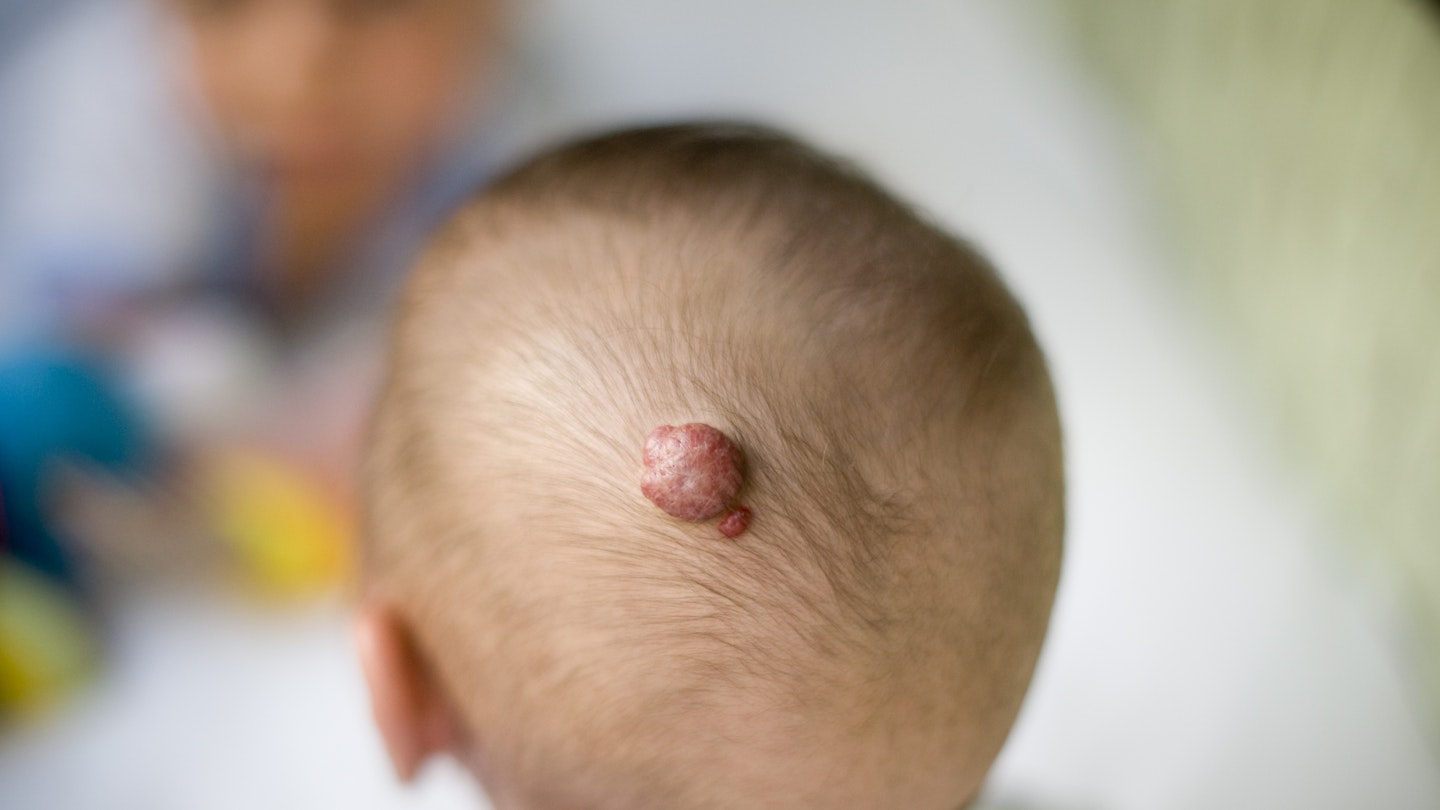It can be really scary when a strawberry mark appears on your newborn, just like a blue-grey birthmark, but while they look worrying, they’re actually very common in babies and tend to disappear on their own. So if one does pop up, here’s everything you need to know.
What is a strawberry mark?
Known by its medical name as a harmangioma, a strawberry mark is a raised, soft lump that’s made up of extra blood vessels. The bright red appearance gives the mark its fruity nickname.
Strawberry marks are really common, with around one in 10 babies developing them. But on each child they’ll look slightly different – they can be as small as a mole or as large as a cup. They can appear pretty much anywhere on the body – but the most common location is on the face, neck or head.
Most babies only develop one strawberry mark
Most babies only develop one strawberry mark, but very occasionally a few may grow on a newborn. When multiple haemangiomas grow, they can also appear on the organs inside the body – most commonly on the liver – and an ultrasound can confirm this.
‘Strawberry marks normally appear a few weeks after birth and grow rapidly in size over the next three months, reaching their maximum size by about nine months,’ says consultant neonatologist Dr Robert Welch. Unfortunately, strawberry marks don’t disappear quickly – they can take anything from two to 10 years to fully fade.
What causes strawberry marks?
Nobody knows what causes them to grow – there are lots of theories but no definite answers.
‘We do know that they are more common in certain groups of babies,’ says Dr Welch. ‘They grow more on girls, on premature babies, newborns who are small for their gestational age, as well as twins and triplets.’
Do strawberry marks require treatment?
While a strawberry mark may affect your baby’s appearance if it’s on her face, around 80 per cent of them don’t develop any problems or need any treatment - but always get your GP to check it out anyway.
Try not to catch or scratch the strawberry mark as it can bleed
Try not to catch or scratch the strawberry mark as it can bleed. If they do start bleeding, apply pressure with a tissue or clean handkerchief. If the bleeding carries on for more than five minutes then take your baby to an NHS walk-in centre or A&E to have it checked over.
You’ll also need to protection your baby’s strawberry mark from the sun because exposure to the sun can cause it to swell and get redder.
In rare cases, strawberry marks can cause some development problems in babies. ‘Harmangiomas on the face may cause disfigurement,’ says Dr Welch. ‘And there are those that may interfere with breathing in and around the neck and/or the neck. There’s also a risk that a strawberry mark could affect your baby’s visual development. ‘
Treatments available for strawberry marks
There are lots of different treatments that your GP may prescribe, including pain relief if the strawberry mark becomes ulcerated and antibiotics if it becomes infected.
‘Propranolol is gaining in popularity because of its simplicity and small number of side effects,’ says Dr Welch. In extreme cases, surgery is sometimes an option if the strawberry mark needs to be removed.
If your baby’s had a strawberry mark, how did you manage it? Share your advice in the comments box below.
